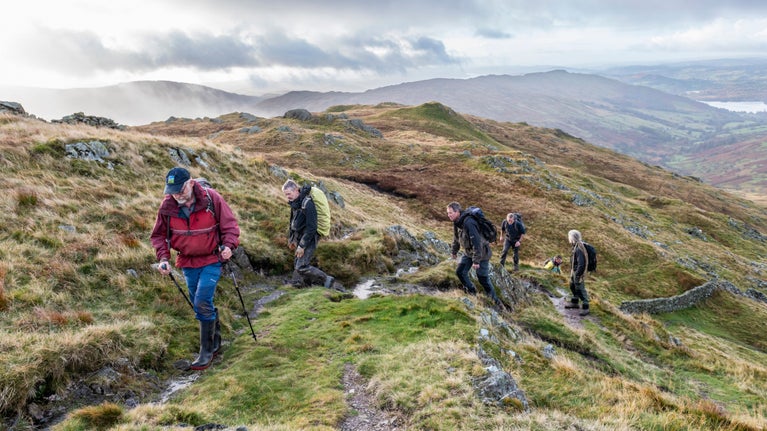
Give back to the places you love
Whether you choose to fundraise, donate or volunteer, there are lots of meaningful ways to help look after the places in our care for future generations.

Looking after coastal paths is a significant part of our work to care for the coast, giving access to awe-inspiring sea views, secret beaches and a rich diversity of wildlife. Find out how we do it and why it is so important.
We look after more than 890 miles of coastline in England, Wales and Northern Ireland (more than 10 per cent of the total coastline). This includes hundreds of miles of coastal paths, allowing more people than ever to enjoy our stunning coasts and reconnect with nature.
Crossing through an extraordinary range of coastal landscapes, these paths not only provide access for people but are also a corridor for wildlife. By maintaining this vital connection between fragmented habitats, we can give the special plants and animals that live along our coastal fringe the best chance of survival.
Each mile of coastline costs around £3,000 a year to maintain. Since its launch in 1965 our coastal fundaising campaign has raised more than £114 million to help safeguard the nation’s precious coastline – work we couldn’t do without this support.
We work with other organisations such as tourist bodies and the South West Coast Path Association to protect and promote access to the coast. These partnerships are an essential part of our wider commitment to coastal access across England, Wales and Northern Ireland.
We've strongly supported the creation of the England Coast Path, which will be one of the longest continuous walking routes in the world, stretching almost 3,000 miles. The path also joins up coastal places we look after in Wales following the opening of the Wales Coast Path in 2012.
In Northern Ireland we're working closely with our partners to look at opening up the coastline, work which has already ensured access along a scenic stretch of the North Antrim coast.
We're also opening much more of our coastal land to visitors and are creating new networks of paths and trails for all to enjoy.

We're guardians for more than 400 miles of coastline in the South West.
This includes approximately 295 miles, or one third, of the South West Coast Path, a national trail stretching for 630 miles from Minehead in Somerset to Poole Harbour in Dorset, linking together the coastal places we care for like a golden thread.
The Coast Path passes through an incredible variety of habitats such as grassland, heathland, moorland, woodland, sand dunes, mudflats, coastal cliffs and saltmarsh, which together support a diverse range of wildlife.
Looking after the Coast Path is a big job for our rangers in the South West and more than a thousand volunteers who help them. Together they carry out practical maintenance tasks such as resurfacing paths, installing steps and boardwalks, and introducing and maintaining waymarking to ensure people don’t get lost.
Our ranger teams are continually working to improve our coastal paths, making them more accessible for everyone. This includes replacing stiles with gates, so more people can use the paths and creating trails that can be accessed by all-terrain mobility scooters.
The coastline is a dynamic landscape, so the teams need to be ready to adapt and respond to coastal change such as cliff erosion. This could involve quickly putting in place path diversions to maintain safe access, replacing washed-away steps following severe storms or using materials such as granite to create hard-wearing paths.
It’s a delicate balance between maintaining the natural appearance of the coast, looking after the important habitats it supports and making sure it’s safe and accessible for all.
We're also planning for future coastal change, making sure there'll be access to our beautiful coast for generations to come.

Whether you choose to fundraise, donate or volunteer, there are lots of meaningful ways to help look after the places in our care for future generations.
Ash dieback is a fungal disease affecting the country’s native ash trees. As many as four out of five ash trees may be affected and, where the dying trees could cause a threat to human safety, we need to remove them.

Discover what we're doing to conserve and protect the plants in gardens across the country, and see some examples of the most special plants and trees.

Find out how we're addressing unequal access to nature, beauty and history and supporting urban areas in managing their heritage and green spaces.

Discover why we joined other leading countryside groups to demand that sensitive places become frack-free zones, in the report Are We Fit to Frack?
